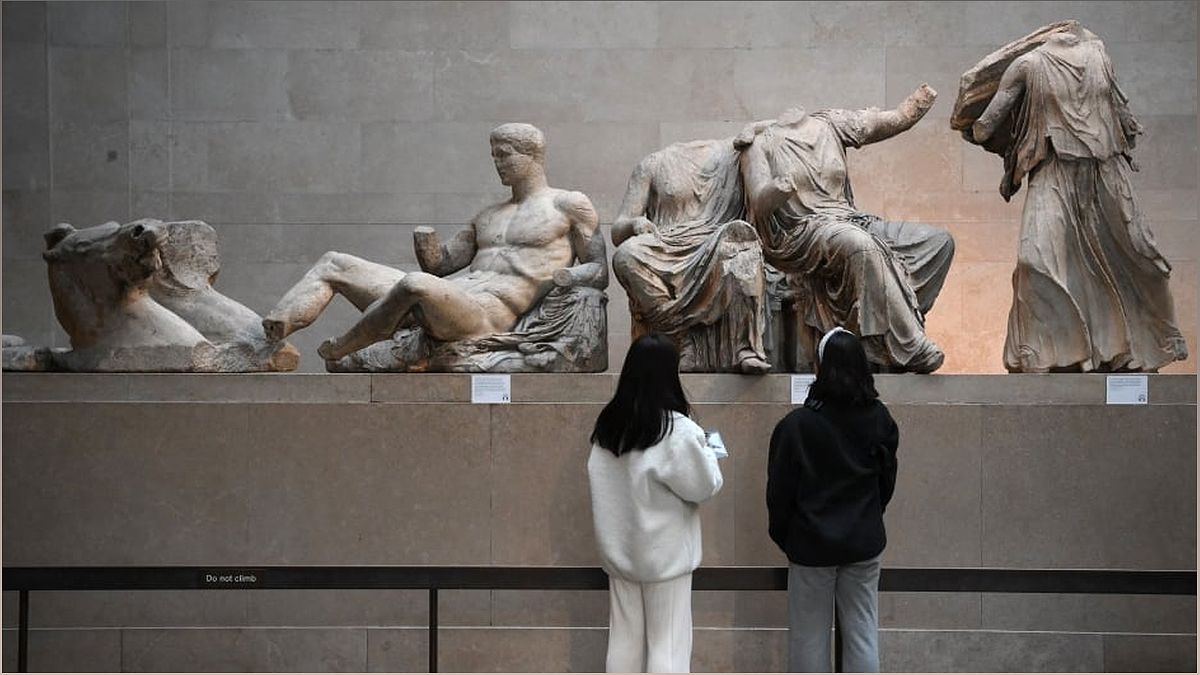In a clash of cultures and ownership, Britain and Greece find themselves at odds over the fate of the Parthenon sculptures. This ancient artwork, dating back 2,500 years, has become a point of contention between the two nations. Greece seeks the permanent return of these sculptures, currently housed in the British Museum, while Britain maintains its legal ownership. Join us as we delve into the history, arguments, and proposed solutions surrounding this heated debate.
The History of the Parthenon Sculptures
Explore the origins and significance of the Parthenon sculptures
The Parthenon sculptures hold a rich history that dates back to 432 BC when they were originally created as part of the Parthenon temple in Athens. Dedicated to the goddess Athena, these sculptures adorned the temple for centuries.
In the early 19th century, British diplomat Thomas Bruce, the Earl of Elgin, removed the sculptures from the temple and transported them to Britain. Since 1816, they have been on display at the British Museum.
The removal of the sculptures sparked controversy, and Greece has been calling for their permanent return since gaining independence from the Ottoman Empire in 1832. The campaign for repatriation gained momentum in the 1980s with the support of Greek actress Melina Mercouri.
The Arguments for Repatriation
Discover the reasons behind Greece's call for the return of the Parthenon sculptures
Greece's argument for repatriation rests on several key points. Firstly, they claim that the sculptures are an integral part of their cultural heritage and should be returned to their rightful home.
Furthermore, Greece argues that the removal of the sculptures was done under questionable circumstances and without proper consent. They believe that the sculptures were essentially looted and should be returned as an act of justice.
Additionally, Greece highlights the importance of reunifying the sculptures in their original context. They argue that the Parthenon is not complete without these missing pieces and that their return would enhance the cultural and historical significance of the site.
The British Museum's Perspective
Understand the British Museum's stance on the ownership of the Parthenon sculptures
The British Museum maintains that they have legal ownership of the Parthenon sculptures. They argue that the sculptures were acquired through a legal contract between Thomas Bruce and the Ottoman Empire.
The museum also contends that the public benefits from having the sculptures displayed in their institution, where they can be appreciated by a global audience. They believe that dividing the sculptures between two museums would allow more people to enjoy them.
While the British Museum has refused to return the sculptures, they have expressed willingness to consider a loan to Greece, provided that Greece acknowledges their ownership.
Proposed Solutions and Compromises
Explore potential resolutions to the dispute over the Parthenon sculptures
The Parthenon Project, a campaign group, has proposed a solution that would see the sculptures reunited in Athens without the need for Britain and Greece to agree on ownership. This would involve a long-term loan from the British Museum to the new Acropolis Museum in Athens.
Another possible compromise is the creation of a joint committee between Britain and Greece to oversee the management and display of the sculptures. This would allow both nations to have a say in their fate while promoting cultural exchange and collaboration.
Despite these proposals, the dispute remains unresolved, and the future of the Parthenon sculptures continues to be a point of contention between Britain and Greece.

